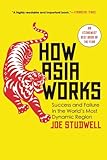It has an excellent account of how manufacturing (supported by heavy protectionism from the state) was a crucial component of the Asian miracle in nearly all countries. IMO India really needs to go through a round of manufacturing expansion, preferably in the high-tech sectors.
The main thrust of the argument is that markets need to be protected but also forced to export. Whether this is through tight currency controls (to get foreign currency you have to export), government support, or government force (Park arrested South Korean businessmen, and released them only when they agreed to focus on export). And ruthless culling of companies that failed in the global market. You also need very disciplined land reform, to create the initial capital generated by intense land use by small farmers - many SE Asian nations failed to do this, and South Korea, Japan, and Taiwan were all quite successful [2]. China is more muddled, but they also had a strong focus on exports and government support for that.
Exports are important, as otherwise protected companies stagnate and become uncompetitive, reliant on government support. With a focus on exports, countries can use their local market as a test bed and a market to build up to exporting to richer countries.
What I'd really like is a good overview of ISI policy in the successful East Asian Countries versus Latin America which has an even longer history of ISI.
[1] http://www.amazon.com/How-Asia-Works-Joe-Studwell/dp/0802121... [2] To an extent too succesful: Japan spends a lot of money today protecting inefficient small farms created by land reform. But it's a small price in comparison.


https://www.amazon.com/How-Asia-Works-Joe-Studwell/dp/080212...